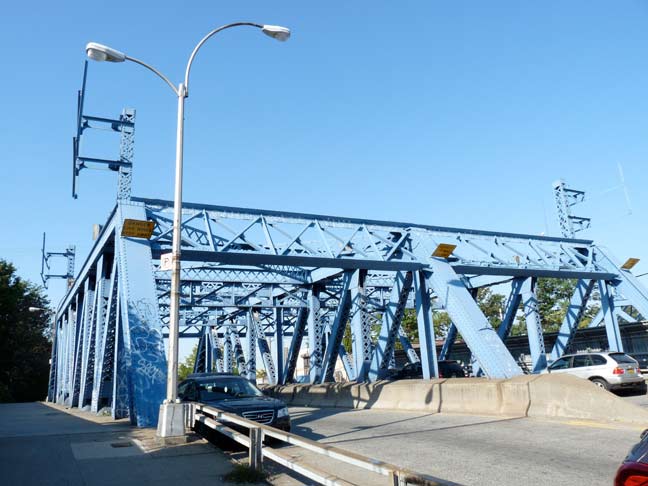Simple bridges are a thing of beauty. This truss bridge takes White Plains Road over the Amtrak/Metro-North tracks just north of East Tremont Avenue, near Parkchester. It has a twin bridge a block away at Unionport Road.
As late as about 2000 it still had a pair of Westinghouse incandescent “cuplights” illuminating the pedestrian walkway.
Just as Flushing Avenue doesn’t go to Flushing, White Plains Road doesn’t go to White Plains, but leaves you off in Mount Vernon.
1/2/13


5 comments
Any idea what the 4 structures that extend above the bridge were used for? They appear to have been supports of some sort.
It’s intersting that we now see beauty in these simple truss bridges that were once considered utilitarian. It may be that we appreciate the quality of the work, the durability and that they seem now to be symbolic of a former time. They also are often replaced by the most uninteresting strucures ever made-often flat concrete/steel structures with no character.
As a good (bad) example, some may remember a beautiful steel truss on route 100 near Chappaqua over New Croton Reservoir, replaced by a non-descript concrete roadway.
The railroad (former New Haven RR) is electrified and they carried the transmission wires. The wires were removed by Amtrak.
Those structures on top of the bridge carry some sort of cables. They don’t seem to have insulators, so they’re not necessarily electric lines. You can see the cables in Streetview.
http://goo.gl/maps/7UgN6
I know that area of the railroad well. Those wires are the railroads transmission lines. Back in the New Haven RR days, the railroad was powered by their own power plant in Cos Cob and they purchased power from commercial companies at the Van Nest area of the Bronx, Devon and New Haven. The catenary (overhead wires over the tracks) was at 11,000V 25 cycle. The transmission lines carried the voltage at a higher current and at numerous locations at interlocking towers, there were switch-gear allowing the operator to isolate section of catenary and transformers stepping down the power to traction current.
The Cos Cob plant is history and that section of track (former NHRR Harlem River Branch) is now Amtrak’s Hell Gate line and the catenary is now at 60 cycle commercially purchased power. Those transmission lines are no longer used.